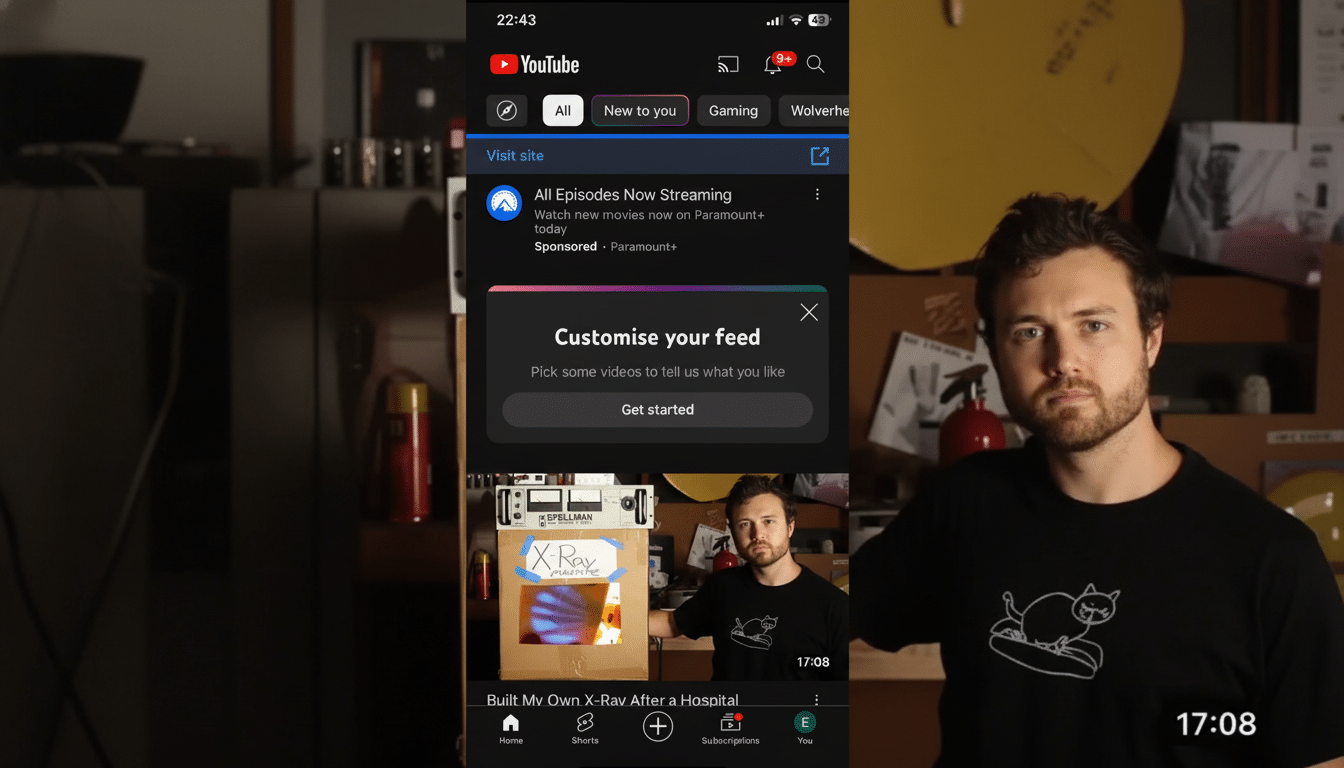YouTube is testing a new setting called Your Custom Feed, which it said is a prompt-based method to tame the wild Home experience and make video recommendations mirror what you actually want to view. Early testers find the option next to the traditional Home tab, and it’s an invitation for users to tell the system what they want in basic English.
The concept is simple but powerful: in place of idly serving you a grab bag of creator uploads, music videos, shorts and old rabbit holes — YouTube will lob you into the breach with only the videos it thinks you really want to watch now.
- What Your Custom Feed does and how recommendations adjust
- Why your YouTube Home feed can feel cluttered and off-target
- How it compares to rival platforms and their recommendation tools
- What the new Custom Feed could mean for creators and channels
- What to watch for next as YouTube expands its Custom Feed test

It’s a tiny UI tweak that marks a transition away from guessing at behavior and toward explicit intent.
What Your Custom Feed does and how recommendations adjust
Your Custom Feed is a temporary lane for discovery based off of your query. Type in a topic, niche or even just format preference — “30-minute beginner piano lessons,” say, “no-spoiler film essays”; think of “rustic sourdough tutorials” kinds of specificity — and the system will rank Home with videos fit for that request. You can iterate in real time by tweaking prompts; you’re training the feed and not having to chase individual channels.
(YouTube hasn’t described the internals, but more probably the feature will simply increase topic weights and involve sources in a portfolio around stated intent — not anchor completely to watch history.) That might address the “you watched three clips, so here are 300 more” problem, in which fleeting curiosity cascades into an overfitted feed.
Why your YouTube Home feed can feel cluttered and off-target
Recommendation systems are great at predicting what people might want to watch next, but they’re less good at capturing why someone watched something. One Disney trailer or fitness short can snowball into an all-encompassing takeover, regardless of whether the interest was brief or belonged to a family member sharing a device. That feedback loop is why feeds can sometimes seem hyper-specific and fantastically off-target.
Scale compounds the issue. YouTube has said that the majority of watch time is generated by recommendations, and industry estimates have suggested around 70 percent to be initiated from recommended content. You don’t need to speak Greek to understand, however, that the stakes become infinitely larger when YouTube is being used by a huge majority of American adults and the algorithm gets intent wrong at scale.
Current controls are some help, but not much. The Mozilla Foundation’s research discovered that buttons such as Not Interested and Don’t Recommend Channel barely altered what people were shown, cutting unwanted recommendations by only 12 percent in its study. Explicit prompts might be a stronger, more up-front signal than here-and-there dislikes and hides that your viewers may have to dig around in menus to find.
(YouTube has attempted to add context in the past — topic chips, the New to you tab and clearer watch-history settings.) Your Custom Feed goes even further, allowing users to actively direct the system, and not just nudge it away from errors.

How it compares to rival platforms and their recommendation tools
Platforms are beginning to converge on user-controlled feeds. Threads has dabbled with algorithm-configuration tools, and X has hinted at tinkering through its Grok assistant. TikTok normalized the idea of recommendations that are super-personalized, but doesn’t provide many explicit controls beyond Not Interested filters. Skunkworks experiment: YouTube’s approach combines search-like intent with its own recommendation engine in a pragmatic hybrid meant to appeal to the casual browsing or mission-based viewer.
Execution will matter. Natural-language queries encourage gaming: producers can make titles and metadata serve the dominant intentions of the day. YouTube will require guardrails to ensure that prompts do not guide viewpoints into echo chambers or bubble up low-quality clickbait. Expect ranking to continue to privilege user-satisfaction metrics — long clicks, survey responses, and “Did this meet your needs?” signals — over raw clicks.
What the new Custom Feed could mean for creators and channels
Discovery could become more “intent-first.” Creators whose content clearly serves specific use cases — how-tos, explainers, deep dives — may do well when users actually express those needs outright. The packaging counts: Snappy titles, organized chapters and thumbnail images based on popular prompts could improve match numbers without having to rely on bait.
Since prompts can, in theory, bring niche subjects higher in search results, smaller channels with authoritative content have a better chance of breaking through. If YouTube links Custom Feed performance to satisfaction instead of clicks, thoughtful, evergreen videos could get a boost.
What to watch for next as YouTube expands its Custom Feed test
It’s a small test, and YouTube frequently experiments with new features on small groups of people across platforms before expanding more broadly. Should Your Custom Feed ship, you can anticipate further refinements in the form of guiding intents (“learn a skill”, “plan a trip”, “deep dives only”), time-bound modes that expire automatically, and per-topic mute or boost controls for faster tuning.
For users, the playbook is simple:
- Try out clear prompts.
- Continue to use Not Interested and Don’t Recommend Channel for cleanup.
- Reset or review your watch history occasionally, especially as your tastes evolve over time.
With the addition of explicit intent to background signals, perhaps the Home page will finally feel more like a place that belongs just to you — less noise, more relevance and not so many algorithmic detours.

